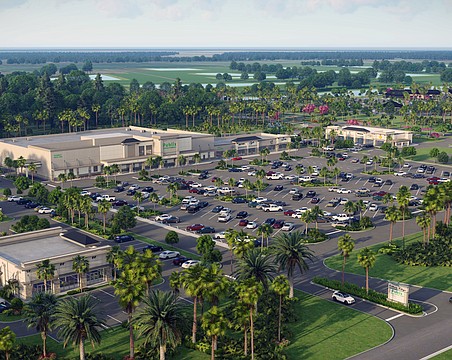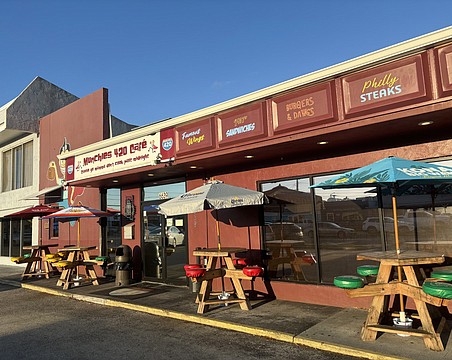Executive Summary
Trend. Economic development City. Cape Coral Key. Developable land is the key to future growth
Signs of the economic recovery are everywhere in Cape Coral.
Just look at Irina Prell, the owner of luxury custom homebuilder Elysium Homes. After she noticed an increase in first-time homebuyers through her model homes, Prell launched a new division six months ago targeting that demographic with homes ranging in price from $190,000 to $300,000.
This is a big deal for Cape Coral, the state's third-largest city by landmass. It was one of the hardest-hit areas during the real estate crisis, notching thousands of foreclosures and putting Lee County on the map as one of the worst areas in the country during the recession.
Now, Prell and others say first-time homebuyers are in the market to buy homes because they're qualifying for mortgages again. She estimates 70% of buyers now qualify for construction and home loans, up from 30% just a few years ago.
In another sign of the economic rebound, the rise in residential rental rates is encouraging some people to consider buying a home because the monthly cost of a mortgage is nearly identical to the rent. Prell says a three-bedroom home in Cape Coral that rents for $1,500 a month today cost $1,000 a year ago.
A healthier residential real estate market is also one reason why Sanibel-based Royal Shell Real Estate recently announced plans to open a 9,000-square-foot office on Cape Coral Parkway. The luxury real estate firm plans to staff it with as many as 40 Realtors and six administrative employees by the end of this year.
Banks see opportunity, too. One year ago, Fort Myers-based Preferred Community Bank opened a branch in Cape Coral. “We've had our best two quarters of lending in our history, and I'm going to attribute a large part of that to being in the Cape,” says Brenda O'Neil, the bank's chairman and CEO.
 Cape Coral has two big draws: waterfront lots on 400 miles of navigable canals and lots of land for future development. “We're only 45% built out,” says Dana Brunett, director of the Cape Coral Economic Development Office.
Cape Coral has two big draws: waterfront lots on 400 miles of navigable canals and lots of land for future development. “We're only 45% built out,” says Dana Brunett, director of the Cape Coral Economic Development Office.
Park your boat
The Cape Coral market is significant: the two zip codes with waterfront access to the Gulf of Mexico accounted for 2,538 transactions totaling $624 million in residential real estate sales for the one-year period ending March 31, according to multiple listing service data compiled by Royal Shell.
“We see it as a stand-alone market,” says Michael Polly, vice president of real estate operations for Royal Shell. Previously, the firm handled transactions in Cape Coral from its Fort Myers office, but the growing number of requests for listings in Cape Coral persuaded executives to open an office there, its 16th in Southwest Florida.
While single-family homes on scattered lots make up most of the residential real estate inventory, several condo developments such as Cape Harbour and Tarpon Point have room for more luxury towers. “We see that opportunity there,” Polly says.
Cape Coral has a history of being the more affordable bedroom community for Fort Myers, but homebuyers are tearing down older homes on waterfront lots and building million-dollar luxury homes there. “The gentrification process is going to happen,” Polly says.
For the year through July 30, real estate firms helped sell 2,589 homes in Cape Coral, a 9% increase over the same seven months in 2014. Over that same period, the median price rose 13% to $173,000, according to the Realtor Association of Greater Fort Myers and the Beach.
Residential real estate lending is a big part of the recovery. “We moved our whole lending operation over there,” says O'Neil of Preferred Community Bank. “We've increased our lending production year-over-year over 30%. It's exceeded expectations.”
While commercial real estate lags the residential market by a few years, such buildings are starting to fill up again with new businesses. “As housing momentum grows, then it creates demand for commercial space,” says Gary Tasman, CEO and broker with Commercial Property Southwest Florida in Fort Myers.
For example, as of June 30 the Cape Coral office market's overall vacancy rate was 10% compared with the same time in 2012 when it was more than 20%, according to market tracker CoStar Group.
Future growth
Ten years ago, Tasman hosted town hall meetings in Cape Coral that he dubbed “Capeopoly.” A play on the popular Monopoly game, the events drew hundreds of commercial real estate investors, developers and prospective tenants scouting opportunities.
The heart of the commercial boom in the last cycle was Pine Island Road, a thoroughfare that splits Cape Coral roughly in half and saw more than 1 million square feet in commercial real estate development during the last cycle. That's enough space to fill more than 17 football fields. “It's still going,” Tasman says, pointing to a new Walmart under construction there.
One of the future growth corridors in Cape Coral is Burnt Store Road, a north-south thoroughfare on the west side of Cape Coral that is scheduled to be widened up to the northern boundary with Charlotte County, which is now widening its stretch of that road. “Burnt Store between Pine Island and the county line will continue to build out with residential first,” Tasman forecasts.
Bob Knight, owner of Cape Coral-based Paul Homes, says customers are asking him to build new homes near the water in the area west of Burnt Store Road. “The northwest was so quiet, but it's starting to pick up,” Knight says.
Knight, who was the first homebuilder to forecast the recovery when he built a model home on Cape Coral Parkway five years ago, says lots in the northwest areas of Cape Coral currently on wells and septic tanks will eventually be tied into the city's utilities, boosting property values. “There's people who know that they're going to hook up to the city,” he says. “To them, it's a very attractive area.”
Longer term, there have been discussions about tying a new exit off Interstate 75 that would lead into the northern part of Cape Coral through North Fort Myers via the extension of Del Prado Boulevard. Del Prado is a busy north-south road on the eastern side of the city that has been dubbed the “gold coast” by real estate investors.
There's plenty of room for growth, says Brunett, who heads the city's economic development efforts. Cape Coral's population now totals 167,000, but it could be home to as many as 400,000 people when it's built out. Brunett says the city owns a number of large parcels that could be developed into corporate parks, malls or entertainment districts.
The challenge for many commercial developers is that rents have not started to rise yet, despite the decline in vacancies. For example, only 5% of the warehouse space in Cape Coral is vacant, but rents have barely budged in a year, according to CoStar. “My biggest fear is running out of inventory,” says Brunett. “Industrial clients won't want to wait around for a new building.”
Still, it may only be a matter of time before the commercial development takes off again as vacancies decline further. “It makes it a lot easier to market a community that's growing again,” Brunett quips.


 Cape Coral has two big draws: waterfront lots on 400 miles of navigable canals and lots of land for future development. “We're only 45% built out,” says Dana Brunett, director of the Cape Coral Economic Development Office.
Cape Coral has two big draws: waterfront lots on 400 miles of navigable canals and lots of land for future development. “We're only 45% built out,” says Dana Brunett, director of the Cape Coral Economic Development Office.



